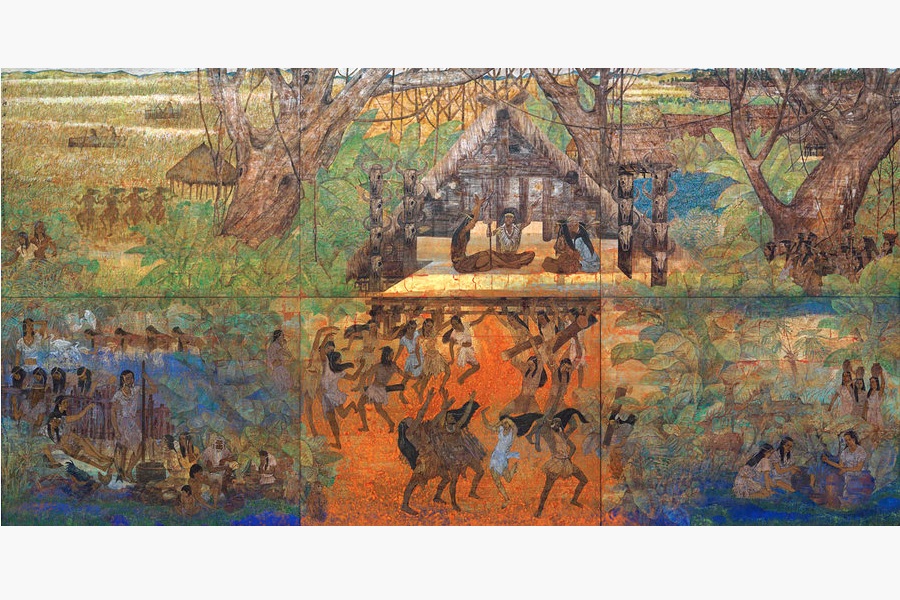 |
|
Hemudu Culture, Chinese ink painting, 270cm×529cm. The Hemudu culture (5500BC-3300BC), a Neolithic culture, once flourished in modern Zhejiang province in China. [Photo/chnmuseum.cn] |
An exhibition featuring 146 paintings and sculptures featuring Chinese history was held at the National Museum of China on Nov 22.
Heroes and patriots are depicted in epic works of Chinese ink paintings, oil paintings and wood cuts, covering thousands years of Chinese history.
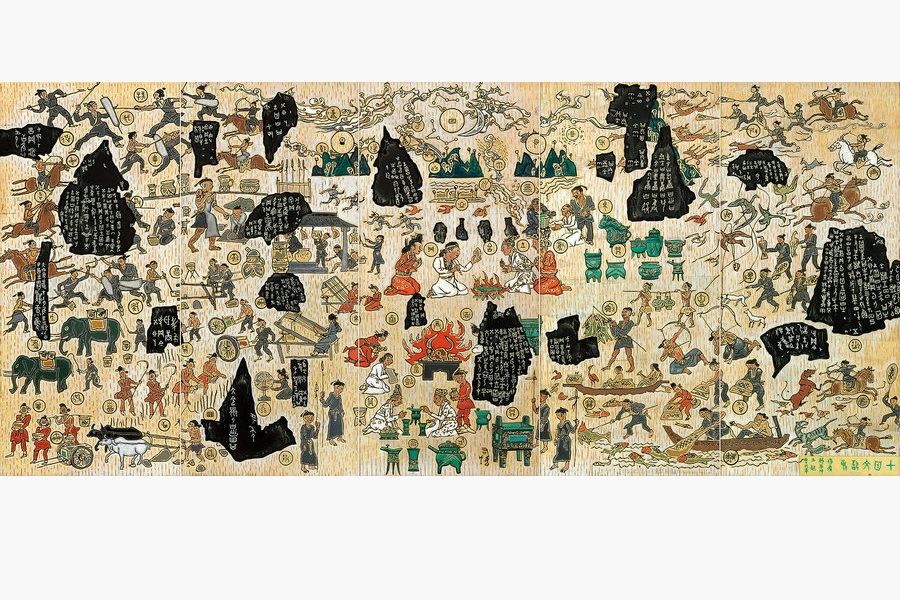 |
|
Inscribe Words on Bones, 186cm×429cm. Jia Gu Wen, or Oracle-Bone Scripture, is the earliest evidence of the Chinese use of the written word. [Photo/chnmuseum.cn] |
 |
|
Warring States Period, oil painting, 269cm×329.5cm. Warring States Period (475-221BC) concluded with Qin Shi Huang’s unification of China. [Photo/chnmuseum.cn] |
 |
|
Mencius Talks about Politics, oil painting, 180cm×359.5cm. [Photo/chnmuseum.cn] |
 |
|
Qin Shi Huang Defeated Six States, by Lu Yu, 283cm×465cm. Qin Shi Huang (259-210BC), was the founder of the Qin Dynasty (221-206BC) and honored as the First Emperor of China. [Photo/chnmuseum.cn] |
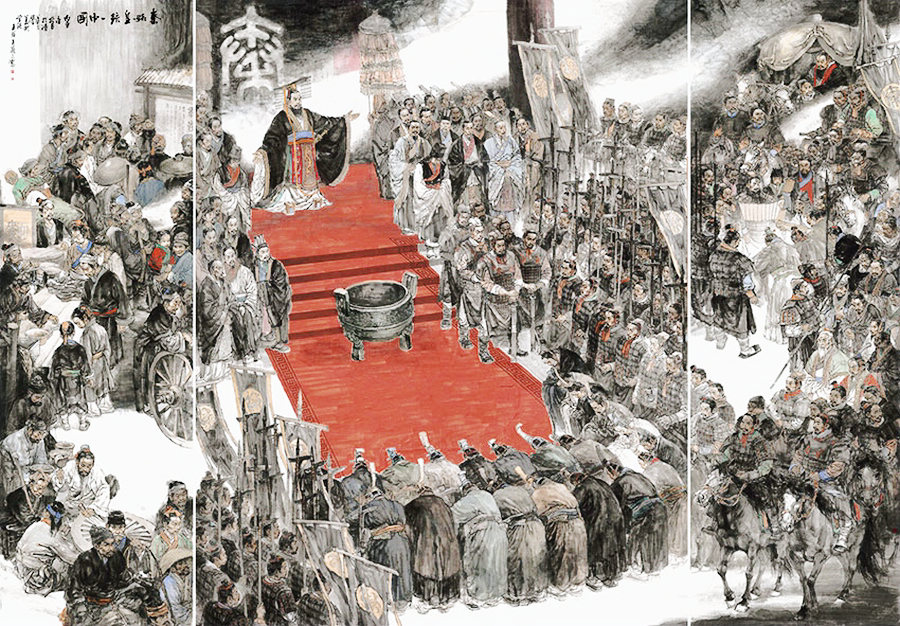 |
|
Qin Shi Huang United China, by Wang Ke and Wang Wei, Chinese ink painting, 500cm×678cm. [Photo/chnmuseum.cn] |
 |
|
Zhu Lin Qi Xian, by Han Shuo, Chinese ink painting, 269cm×538.5cm. The painting features seven worthies from the Wei and Jin dynasties (AD220-420). [Photo/chnmuseum.cn] |
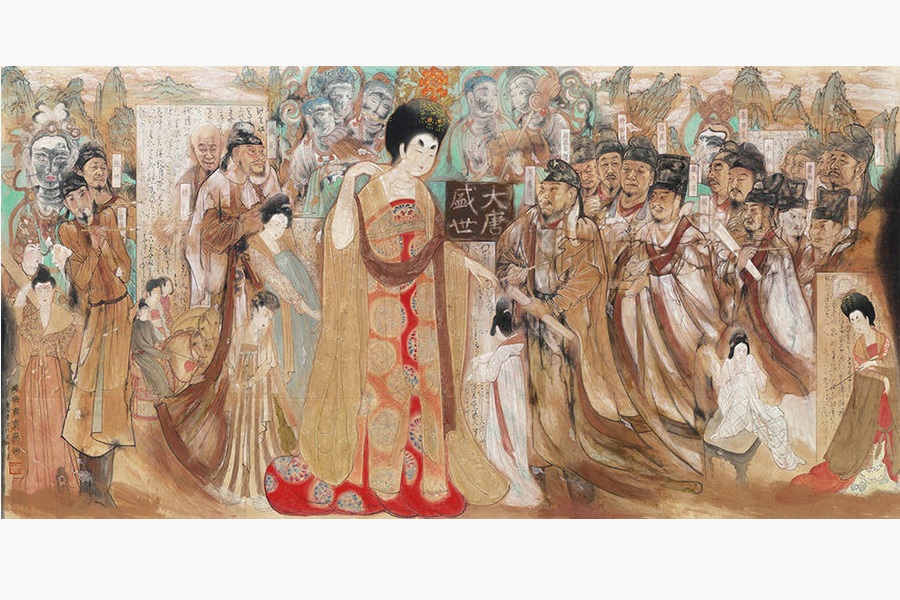 |
|
The Prosperous Tang Dynasty and Its Paintings and Calligraphy, by Tang Yongli, Chinese ink painting, 190cm×380cm. [Photo/chnmuseum.cn] |
 |
|
The Charm of Song Poems, by Wu Xiansheng and Wu Guanhua, Chinese ink painting, 182.5cm×364cm. [Photo/chnmuseum.cn] |
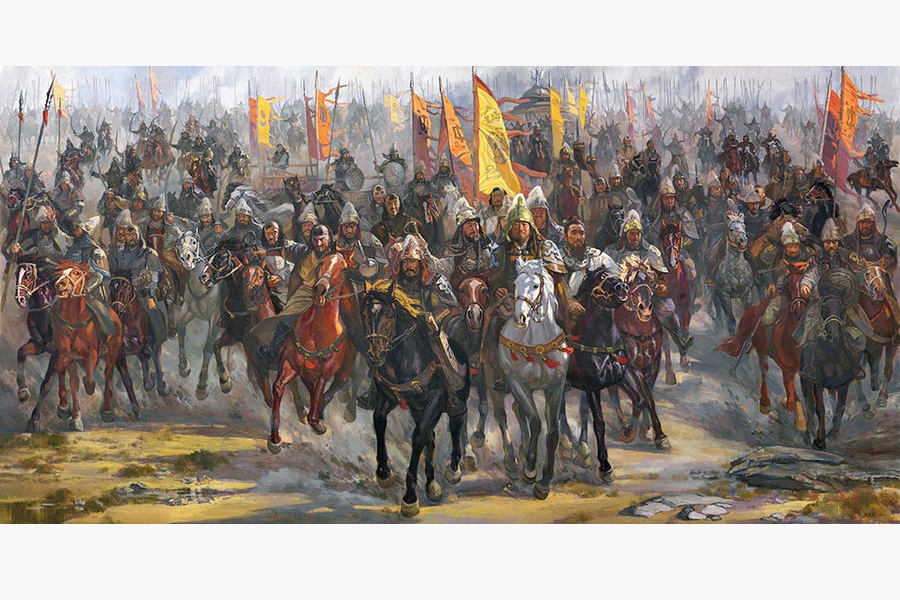 |
|
Genghis Khan and his Army, by Sun Lixin, oil painting, 270cm×530cm. [Photo/chnmuseum.cn] |
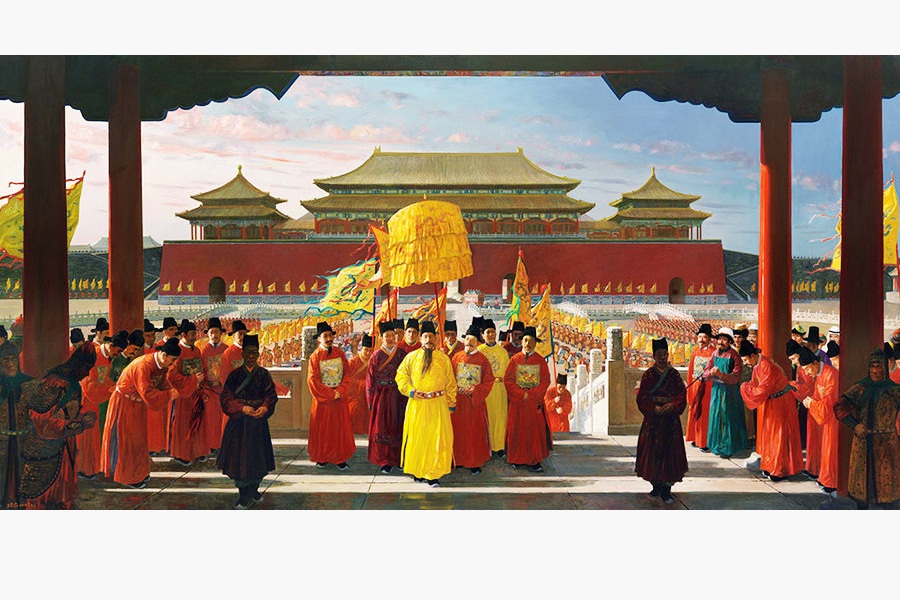 |
|
By Wang Junrui, oil painting, 270cm×530cm. The paining features Zhu Di, the third emperor of the Ming Dynasty (1368-1644), moving the capital to Beijing. [Photo/chnmuseum.cn] |
 |
|
Chinese Opera, by Wang Yingsheng, Chinese ink painting, 268cm×448cm. The painting features four famous Anhui opera troupes moving to Beijing in the Qing Dynasty (1644-1911). [Photo/chnmuseum.cn] |

Presented by Chinadaily.com.cn Registration Number: 10023870-7
Copyright © Ministry of Culture, P.R.China. All rights reserved